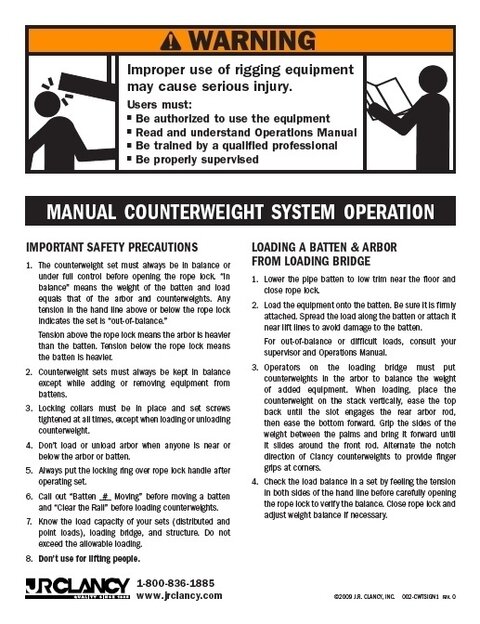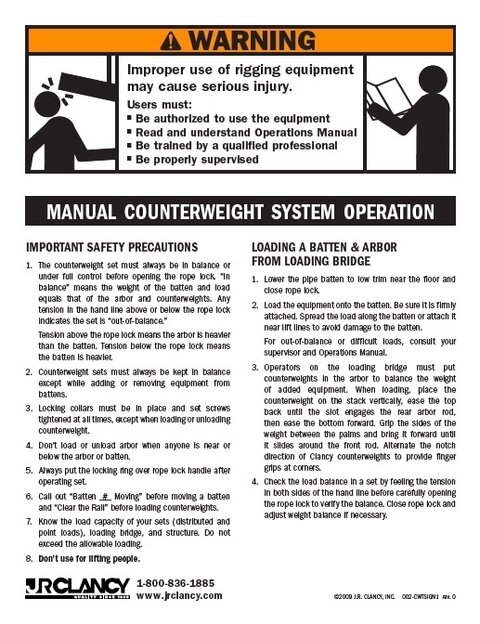As an
ETCP I've been brought in after a number of accidents. Some by the
venue to check things out, others by attorneys looking to establish culpability. The striking thing I've noticed is, of the accidents I've reviewed none had a single isolated event that caused the accident. In every case it's been a multi-step process. "A" happens, which is bad but wouldn't have caused an accident, but in this case "B" also happened, and we don't usually do "C" so...wham.
I commend hillbillyfunk. Perhaps the plan isn't perfect; it doesn't really matter. It's a plan and it's better than no plan. It achieves the primary goal - making people think and creates discussion in his
venue. The next accident will be different, you won't be expecting it, but perhaps because they considered what to do someone will do something better.
Motorized rigging has some limited advantages. It's not the holy grail of
safety by far. They work well on electrics in some cases. For the other 95% of
stage rigging, it's nearly impossible to
beat counterweight. With new products like JR
Clancy's
head block with the over speed brake (displayed at
LDI), Thern's Brickhouse
arbor & rope lock, wider spread use of multi-groove loft blocks, and synthetic
purchase lines,
counterweight rigging is about as safe of an answer as there is,
IMO. Rigging, driving, eating peanut butter - it's all dangerous if you don't pay attention.




